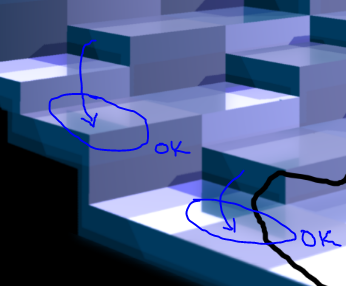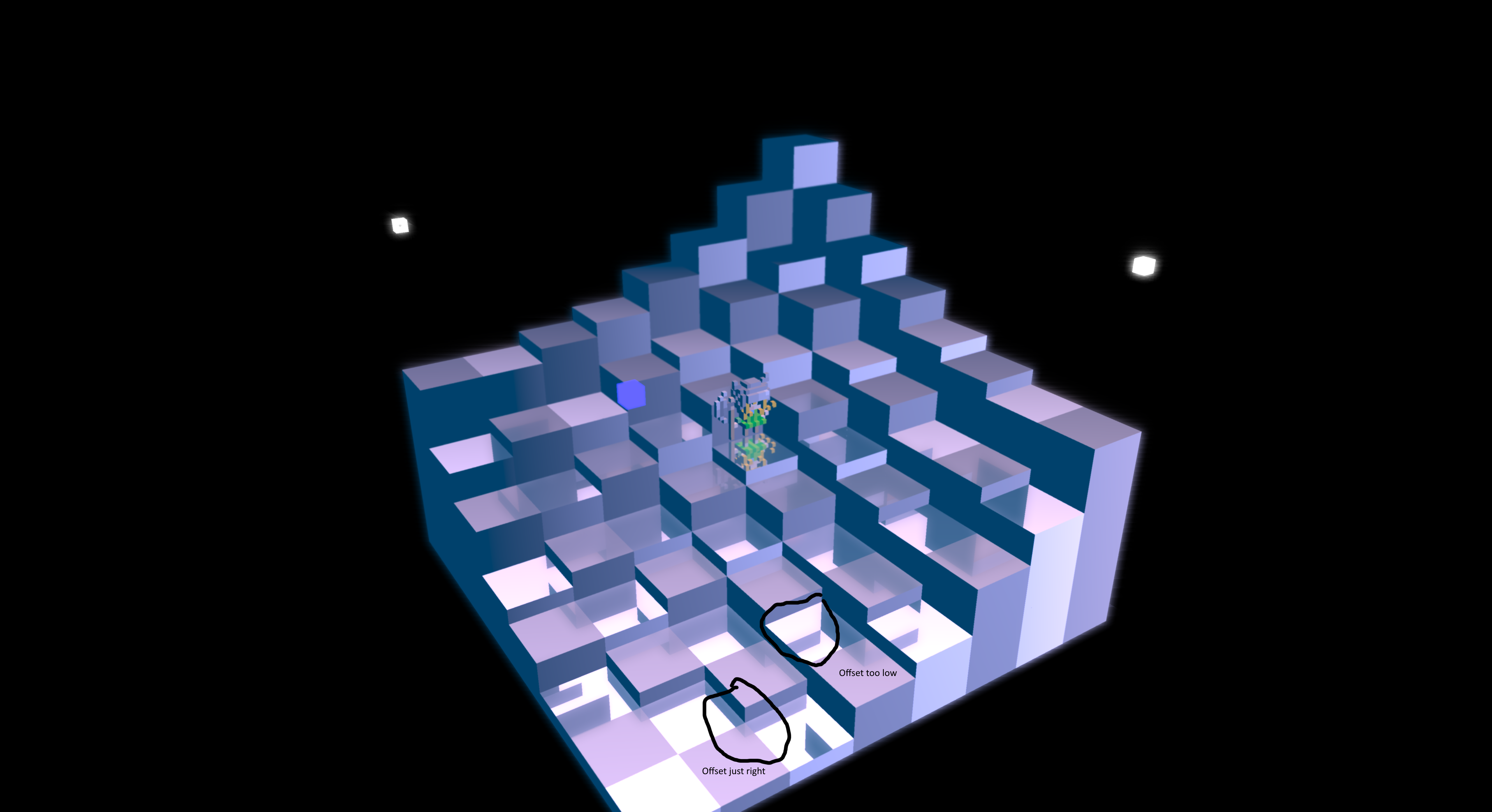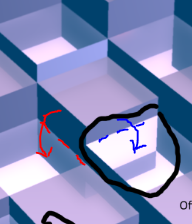Nice shot.
taby said:
I kind of sort of am heading in the right direction. It sort of works!
To me the problem is that seemingly it works better than it should work.
The reflections on the lowest level are correct.
But the reflections on the next higher two levels seem correct too, at some spots at least. Although they should be off.
If you're confused too, for whatever reasons, i would edit the scene to filter out false conclusions. Make every block a different color, avoid repetition. Also turn off shadows because they can look similar to reflections. Visualize where the reflection plane is.
I'm personally confused the most about this:

How can it be both those reflections are correct, although the reflecting surfaces are at different height.
You should figure out. Maybe you can save gaming by making 2000 bucks GPUs obsolete. \:D/







